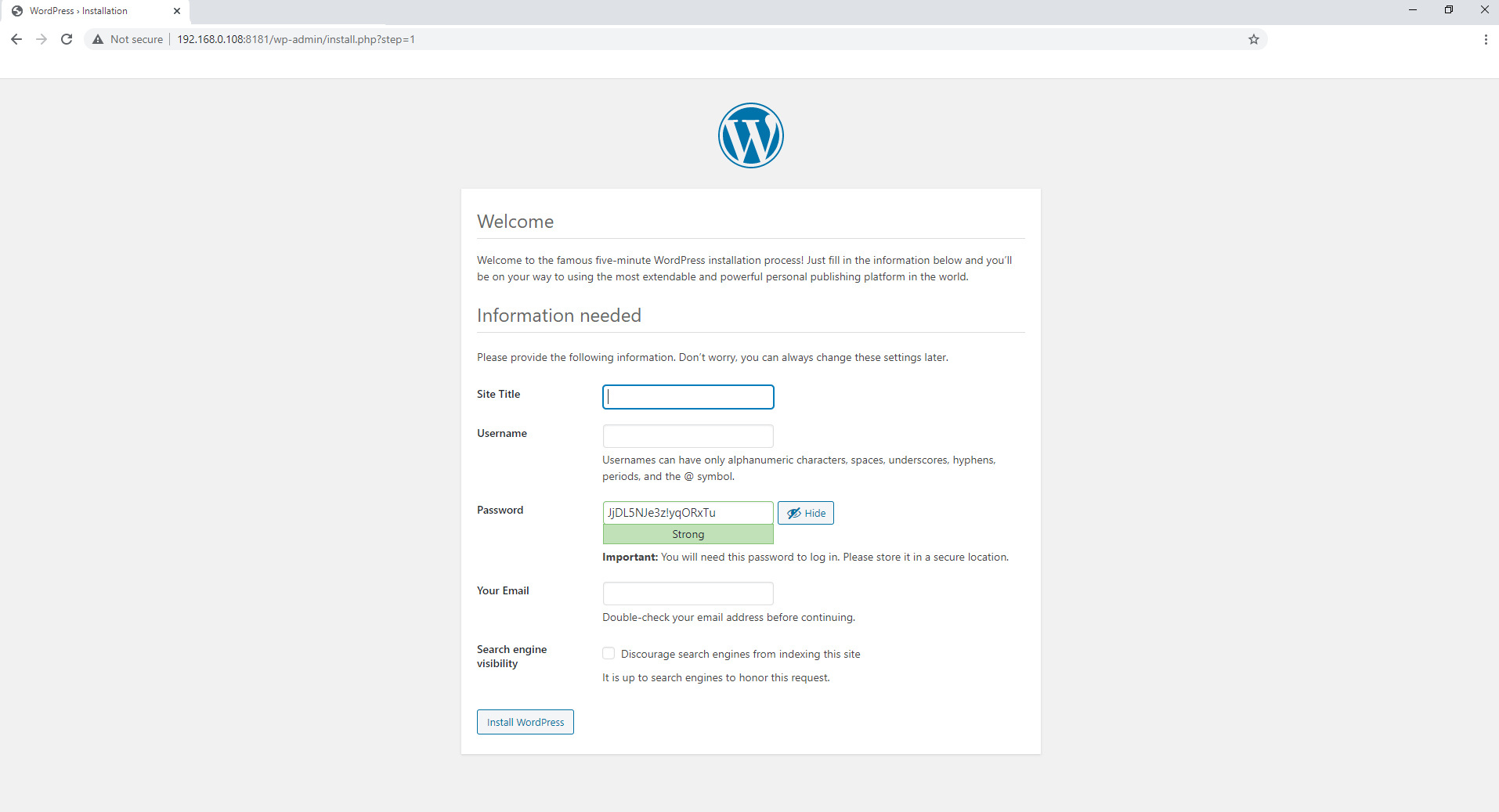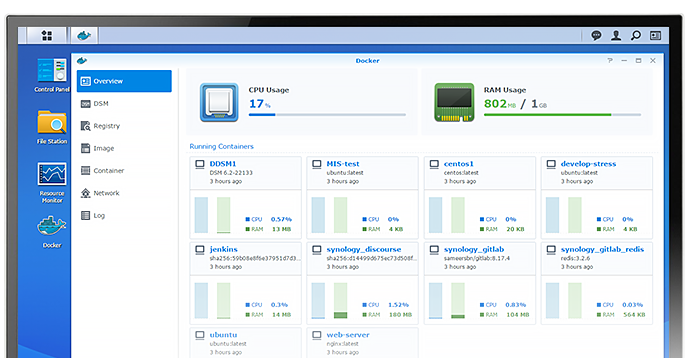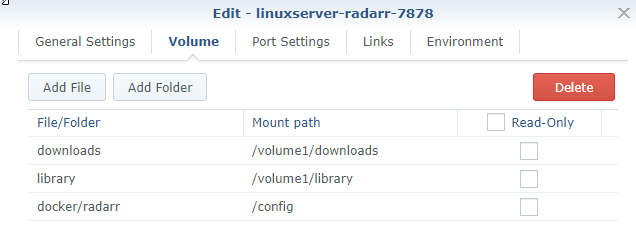The beta image has been updated to support package installation at run time. With this change you can now install the beta releases on more systems, such as Synology. This should open up access to the beta program for more users of this docker image.
1. Installation
Simply find and install a Docker application from the Synology Package Center.
Docker BitWarden - self hosted password manager using bitwardenrs/server image: Docker Firefly III - self-hosted manager for your personal finances: Docker Install nginx-proxy-manager: App Synology DS Manager – Download Station macOS app and Safari Extension 2020 NEW. You don´t need to open port 443 in your container, the certificate validation is managed by the web proxy. Please note that when running a new container to generate certificates with Let's Encrypt (-e LETSENCRYPTHOST=your.domain.com), it may take a few minutes. If you're using your Synology NAS for web hosting or if you have a service which must be accessible to all, follow the instructions in the images below. As mentioned above, if you are using your Synology NAS for web hosting, MailPlus server etc, you have to select from a list of built-in applications and exclude your service.
Note: If you do not find the application in your Package Center, your Synology is most probably not supported yet:
Due to the hardware requirement, Docker will be only available on the following models:
18 series: DS3018xs, DS918+, DS718+, DS218+
17 series: FS3017, FS2017, RS18017xs+, RS4017xs+, RS3617xs+, RS3617xs, RS3617RPxs, DS3617xs, DS1817+, DS1517+
16 series: RS18016xs+, RS2416+, RS2416RP+, DS916+, DS716+II, DS716+, DS216+II, DS216+
15-series: RC18015xs+, DS3615xs, DS2415+, DS1815+, DS1515+, RS815RP+, RS815+, DS415+
14-series: RS3614xs+, RS3614xs, RS3614RPxs, RS2414RP+, RS2414+, RS814RP+, RS814+
13-series: DS2413+, RS3413xs+, RS10613xs+, DS1813+, DS1513+, DS713+
12-series: DS3612xs, RS3412xs, RS3412RPxs, RS2212RP+, RS2212+, DS1812+, DS1512+, RS812RP+, RS812+, DS412+, DS712+
11-series: DS3611xs, DS2411+, RS3411xs, RS3411RPxs, RS2211RP+, RS2211+, DS1511+, DS411+II, DS411+
10-series: DS1010+, RS810RP+, RS810+, DS710+(source, last updated 09-29-2017)
2. How to use it?

When you start a Docker application, you will see an application menu on the left side:
- Overview
- Registry
- Image
- Container
- Log
Overview
Here you will see your running containers, i.e. your running applications including allocated memory and CPU resources.

The real command in Docker:
Synology Docker Images
Registry
On the registry page, you can search for new images (the same as on the official site). You can also add some new repositories (in addition to the official site) in Settings.
The real command in Docker:
After you found your image (e.g. ubuntu in our case), you should download it to your Synology. All Images are read-only and you can use them multiple times for more containers.
The real command in Docker:
Image
Here you will find images available on your Synology, ready to create new containers using a wizard or directly with a docker run command. You can usually find this command on the official page with an image.

The real command in Docker:

When you start a Docker application, you will see an application menu on the left side:
- Overview
- Registry
- Image
- Container
- Log
Overview
Here you will see your running containers, i.e. your running applications including allocated memory and CPU resources.
The real command in Docker:
Synology Docker Images
Registry
On the registry page, you can search for new images (the same as on the official site). You can also add some new repositories (in addition to the official site) in Settings.
The real command in Docker:
After you found your image (e.g. ubuntu in our case), you should download it to your Synology. All Images are read-only and you can use them multiple times for more containers.
The real command in Docker:
Image
Here you will find images available on your Synology, ready to create new containers using a wizard or directly with a docker run command. You can usually find this command on the official page with an image.
The real command in Docker:
We use a long running process for creating a new container from a docker run command:
The Synology wizard checks your command for compatibility, not all docker run parameters are available for use.
- Docker run supports the below parameters:
'd', 'detach''e', 'env''link''m', 'memory''name''P', 'publish-all''p', 'publish''privileged''v', 'volume'
- Docker run does not support the below parameters:
'a', 'attach''add-host''c', 'cpu-shares''cap-add''cap-drop''cidfile''cpuset''device''dns''dns-search''entrypoint''env-file''expose''h', 'hostname''i', 'interactive''lxc-conf''net''restart''rm''security-opt''sig-proxy''t', 'tty''u', 'user''w', 'workdir'
Basically, your containers need to run as a daemon on your Synology (an opposite to run an interactive shell). It makes sense, you cannot run an interactive shell in your Synology Docker application in a web browser.
Back to our new ubuntu container (actually got name dummyUbuntu). The wizard offers to set more options, but we want to create a dummy container, so click Next, Next, Next.
Container
The dummyUbuntu container appears now on the Container page.
Synology Docker Image File
The real command in Docker (prints all containers including stopped):
The last step is waiting for us: Run it.
This site contains user submitted content, comments and opinions and is for informational purposes only. Apple may provide or recommend responses as a possible solution based on the information provided; every potential issue may involve several factors not detailed in the conversations captured in an electronic forum and Apple can therefore provide no guarantee as to the. We would like to show you a description here but the site won't allow us. Set up users, guests, and groups on Mac. If your Mac has multiple users, you should set up an account for each person so each can personalize settings and options without affecting the others. The root user is disabled by default. If you can log in to your Mac with an administrator account, you can enable the root user, then log in as the root user to complete your task. The root user account is not intended for routine use. Its privileges allow changes to files that are required by your Mac. Apple tv app mac os sierra.
When you double click on any container, a window with some more details about a running container appears.
You see some information about our dummyUbuntu container and capability to Start, Stop, Restart it.
The real command in Docker:
You can see other information about a running container using the top menu.
The real command in Docker:
On the Log tab, you can see logs from your container (not automatically refreshed, maybe in the future with the parameter -f as available in the standard Docker client).
The real command in Docker:
The last tab Terminal shows output of a command used to run your container (in our case the dummy long running process: 'while true; do echo hello world; sleep 1; done' )
The real command in Docker:
Note: The docker attach command never starts a new instance of a shell, instead of that you will see an ongoing output of the first start command. For more alternatives, see the point 8 on page 10 Useful Docker Commands – Tips and Tricks.

